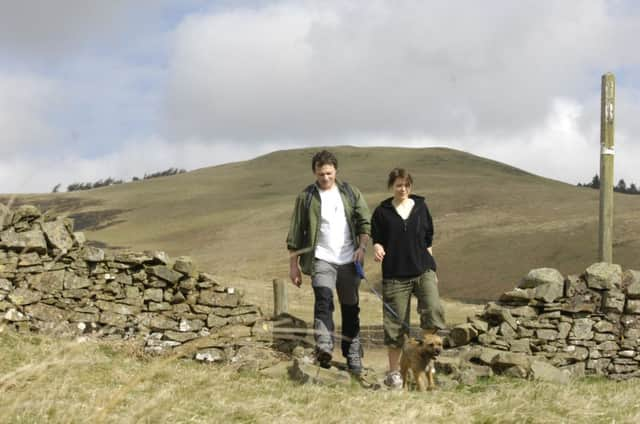Looking after the wild lands vital for future


Land reform has been a priority of the Scottish Parliament since it was reconvened in 1999. Today, as the Scottish Government considers the next steps in the land reform programme, we need to ask what lies ahead for our uplands. This question goes to the heart of how we use the Earth’s resources, our impact on wildlife and wild places and the atmosphere.
We cannot delay. James McClintock spelt out the dangers in his book Lost Antarctica (2012) recounting how ice cores have demonstrated that at no time in the past 420,000 years have atmospheric carbon dioxide levels exceeded 200-300 parts per million (ppm), until the industrial revolution. Since then we have reached 393ppm and rising. Reducing carbon loss needs to be central to Scottish proposals for land reform if the ambitious targets for mitigating the adverse impacts of climate change are to be met.
Advertisement
Hide AdAdvertisement
Hide AdWe come, however, from a difficult place. The eminent scientist Frank Fraser Darling, writing his West Highland Survey in the 1950s, spoke bluntly of the challenge: “the Highlands and Islands are largely a devastated terrain and any policy which ignores this fact cannot hope to achieve rehabilitation.”
More recently sheep farmer Reay Clarke, in his excellent book 200 Years of Farming in Sutherland, noted the failure to shift attitudes: “Sometimes we stop using practices of husbandry which are beneficial and we change to ways which impoverish the soil. No serious steps have yet been taken to rebuild the fertility of these mountains and moorlands.”
The situation is indeed grave, but we must not miss some green shoots of recovery. Central to this must be effective control of grazing animals.
In 1951 the Nature Conservancy established Britain’s first National Nature Reserve (NNR), at Beinn Eighe, in Wester Ross. From 1962 to 1974 I was based at Beinn Eighe implementing a management policy for the restoration of the ancient native pinewood based on fencing, ploughing, planting and fertilising. This highly interventionist approach had its origins, in part, from political and public pressure to be seen to be “doing something for the pinewoods”. More could have been achieved by simply increasing the cull of red deer and being patient, observing the recovery of the vegetation and its associated species.
In 1974 I transferred to the Cairngorms NNR and found the same interventionist approach in place. A robust internal debate ensued with the result that a new policy was established, based on a deer reduction programme, with a prohibition on fencing, ploughing and planting. The success of this approach is seen today in many parts of the Cairngorms with large tracts of regenerating native pinewood in Abernethy, Glenfeshie, Glenmore, Mar Lodge and Rothiemurchus, involving both public and private sector owners. In such areas we must resist any planting to speed up the woodland establishment. Planting trees here is ecological vandalism and a complete waste of money.
Elsewhere in Scotland the planting of trees for conservation and wood production should be a priority.
Wherever we have remnants of native woodland, we need to commit to the restoration of that woodland through natural regeneration, not planting. Fundamental to that objective must be a new approach to deer management, reducing deer numbers through culling not fencing.
In 2009, the European Parliament passed a Resolution on Wilderness. Since then the Scottish Government, through its mapping of wild land in Scotland, has been implementing this resolution. The land reform process must include the protection of wild land character, from our garden fence to mountain summit, as well as the climate change mitigation programme.
Advertisement
Hide AdAdvertisement
Hide AdCoupled to this should be incentives to encourage the capture of carbon through the way that we manage our upland landscapes. Just take a walk through Glen Feshie to see how public and private sector interests are using natural processes to restore the landscape. It points the way to Scotland’s future.
• Dick Balharry MBE, is a naturalist, writer and broadcaster who spent his working career with the Red Deer Commission, Nature Conservancy Council and Scottish Natural Heritage. He is a vice president of Ramblers Scotland, www.ramblers.org.uk/scotland